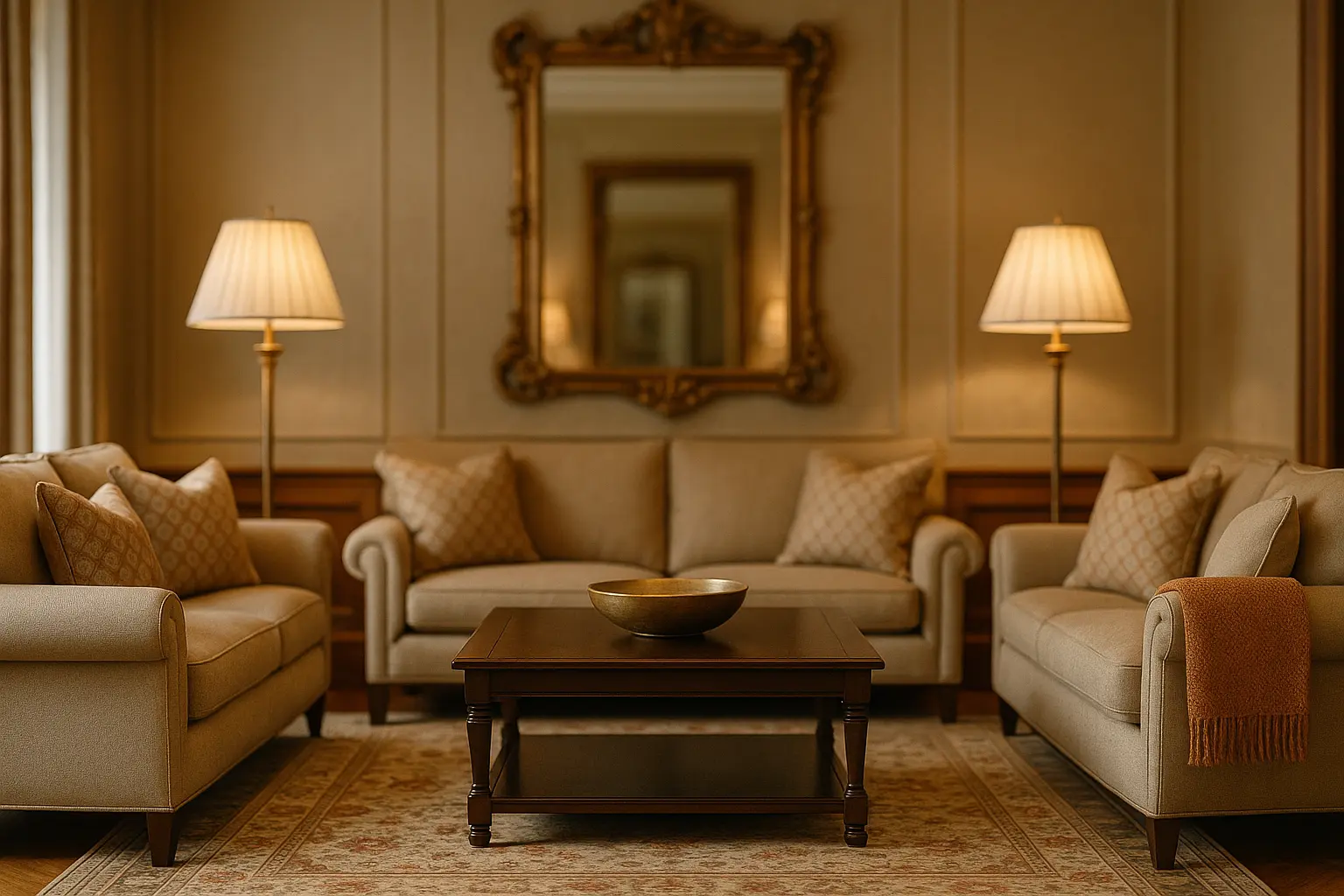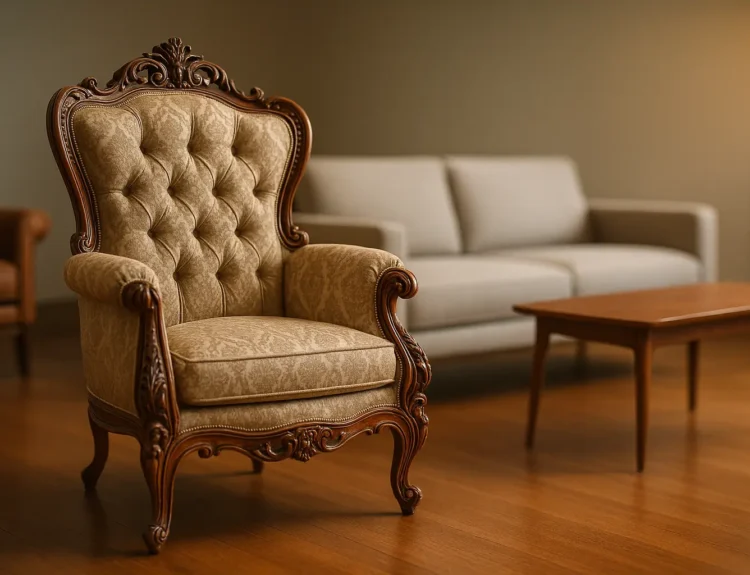In the realm of interior design, symmetry stands as a timeless pillar, crafting spaces that exude balance and harmony. Symmetry, both delicate and profound, is more than just an arrangement of furniture or the mirror-like placement of elements; it’s an art that taps into our innate craving for order. As we navigate through our living spaces, the notion of symmetry often defines the aesthetic flow, creating an environment that feels both inviting and balanced. Today, let’s delve into how symmetry plays an instrumental role in shaping our environments and, ultimately, our experiences within them.
Understanding the Essence of Symmetry in Design
Symmetry is not just about splitting a space into two halves; it’s the art of creating a visual balance that feels cohesive and intentional. When we talk about symmetry, we refer to the mirroring of elements that bring a sense of order. This is reflected in many aspects of interior design, from the placement of furniture to the arrangement of decor.
Symmetrical design is often perceived as calming and organized. It draws from the principles of balance where each side of a room holds equal weight in terms of visual impact. Imagine walking into a room with identical armchairs flanking a fireplace, or a dining table centered beneath a chandelier, with matching settings on either side. These elements create a visual equilibrium that feels inherently right.
Yet, symmetry is not about conformity. While it provides the skeleton of design, it invites creativity in how we layer textures, colors, and patterns. It’s a dance between predictability and surprise, allowing for a space that feels structured yet inviting. In a modern context, symmetry can help in making a room appear larger, as the mirrored elements draw the eye across the space, emphasizing its dimensions.
Ultimately, the essence of symmetry lies in its ability to create an underlying harmony. It’s about crafting a space that not only looks good but also feels good to be in, fostering a sense of peace and balance.
Creating Dynamic Spaces with Symmetrical Elements
The power of symmetry in interior design extends beyond mere aesthetics. It acts as a guiding force for organizing and structuring spaces, whether in a bustling kitchen or a serene living room. The key is using symmetrical elements to create a flow that enhances the visual appeal and functionality of a space.
Consider the furniture arrangement in your living room. A symmetrical setup might involve placing two sofas facing each other with a coffee table in between. Add matching lamps on either side, and you’ve got a layout that invites conversation and relaxation. This arrangement not only optimizes the flow of a room but also frames a focal point, such as a fireplace or a piece of art.
In more complex spaces, like open-plan living areas that encompass a dining room and kitchen, symmetry helps define zones. Think of a kitchen island as a central element flanked by equally spaced units, or a dining table centered with chairs symmetrically placed. These arrangements create balanced spaces where each function flows seamlessly into the next, creating unity within diversity.
Symmetrical design doesn’t require perfect mirroring. It thrives on harmony and proportion, using elements like color schemes and textures to unify a space. It’s about creating a rhythm where each piece complements the other, crafting a dynamic yet cohesive environment that captivates and comforts.
When we employ symmetry in our interior spaces, we’re doing more than just arranging furniture; we’re crafting experiences, where every glance is met with harmony and every corner invites exploration.
Exploring Asymmetry and Balance
While symmetry is a powerful tool, exploring asymmetry can be equally compelling in interior design. The interplay between symmetry and asymmetry creates visual interest, drawing the eye and engaging the observer in a dance of elements.
Asymmetry offers an intriguing contrast, sparking curiosity and breaking monotony. Consider a room where a large, asymmetric artwork is paired with symmetric furniture placement. Here, the artwork becomes the focal point, while the balanced furniture offers a harmonious backdrop. This creates a dynamic tension that enlivens the space.
Using asymmetry within a symmetric framework can lead to unexpected beauty. Imagine a living room where a central chandelier is subtly offset by a larger piece of furniture on one side. The eye automatically seeks balance, making the space feel more alive and engaging.
When we blend symmetry with asymmetry, we approach design from a holistic perspective. We utilize visual balance through varied elements and layouts, allowing for creativity and personalization. This method is particularly effective in modern designs, where eclectic styles and unexpected compositions are celebrated.
Ultimately, the synergy of symmetry and asymmetry in design lies in their ability to create harmony through contrast. It challenges the observer’s perception, prompting them to appreciate the subtleties of a space. As designers, we have the opportunity to craft environments that are not only visually stimulating but also balanced and cohesive, celebrating the power of both principles.
Curating a Harmonious Home with Symmetry
In our quest to create a harmonious home, symmetry serves as a foundational element, guiding us in achieving a balance of style and function. As we explore the nuances of symmetrical interior design, we must also consider the emotional impact of our spaces.
A well-balanced room is more than organized furniture; it fosters a sense of calm and wellbeing. Imagine a bedroom where the bed is centered against a wall, flanked by twin side tables and lamps. This arrangement not only offers aesthetic balance but also creates a sense of security, turning the bedroom into a sanctuary.
In a kitchen, symmetry can streamline the cooking experience. Consider a countertop layout where appliances are evenly distributed, making the space more functional and efficient. This symmetry in placement translates to smoother workflow and harmony in movement.
Yet, achieving perfect symmetry isn’t always practical or desirable. Real-life spaces often demand flexibility, and sometimes, the charm lies in their imperfections. It’s essential to adapt symmetry to the needs of everyday living, allowing for personal touches and functional necessities.
As we curate our homes, remember that symmetry is a tool, not a rule. It provides a framework to build upon, allowing for creativity and personalization. Whether through balanced furniture layouts, strategic color schemes, or thoughtfully arranged decor, symmetry offers a pathway to a harmonious home. It’s about creating spaces where every element, every side, and every corner contributes to a unified whole, a place that feels inherently right.
In our exploration of the power of symmetry in interior design, we’ve uncovered the myriad ways it enhances our living environments. Symmetry offers a gateway to balance, creating spaces that not only captivate the eye but also nurture the soul.
Whether through perfectly mirrored layouts or the dynamic interplay with asymmetry, symmetry provides the foundation for a harmonious space. It’s about crafting an environment that speaks to our innate desire for order, offering a sanctuary from the chaos of the outside world.
As we continue our design journeys, let us embrace symmetry as a trusted ally. May it guide us in creating homes that reflect our personalities, enrich our lives, and foster the harmony we all seek. In the end, it’s not about achieving perfection but finding the balance that feels right for us.
FAQ
What role does symmetry play in enhancing the aesthetics of a room?
Symmetry contributes to a balanced and harmonious atmosphere in a room by ensuring that elements on either side of a central point are mirrored. This balance can create a visually pleasing environment that feels orderly and cohesive.
How can one incorporate symmetry in furniture arrangement?
To achieve symmetry in furniture arrangement, place identical or similar pieces of furniture on either side of a focal point, such as a fireplace or a large window. This can include matching chairs, lamps, or side tables, which helps to create a sense of balance.
What are some effective ways to use symmetry with color in interior design?
Utilizing symmetry with color involves repeating color schemes and patterns equally across a space. For example, using the same shades on opposite walls, or matching curtains and cushions to create a uniform look on either side of a room.
Can symmetry be applied to lighting design, and if so, how?
Yes, symmetry can be applied to lighting by using identical fixtures on either side of a central point such as a bed, sofa, or dining table. This not only provides balanced illumination but also reinforces the overall symmetry of the space.
Are there any design elements where symmetry is not advisable?
While symmetry is generally appealing, it’s not always suitable for every design element. For instance, in small or irregularly shaped rooms, strict symmetry may make the space feel cramped. Asymmetrical design can sometimes create more visual interest and adapt better to unconventional spaces.



